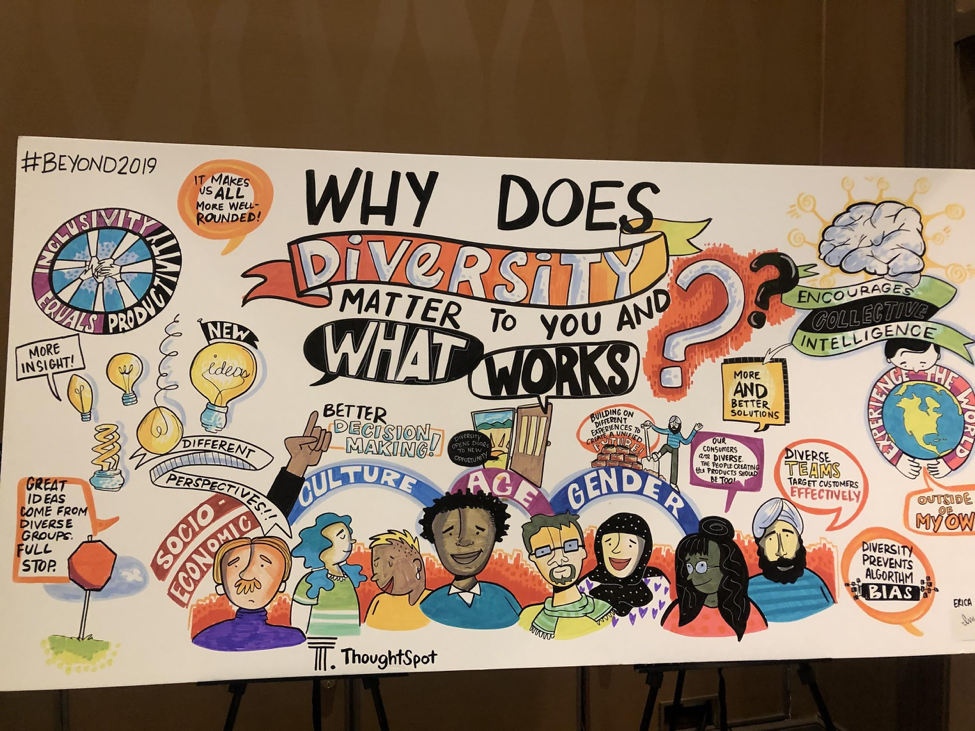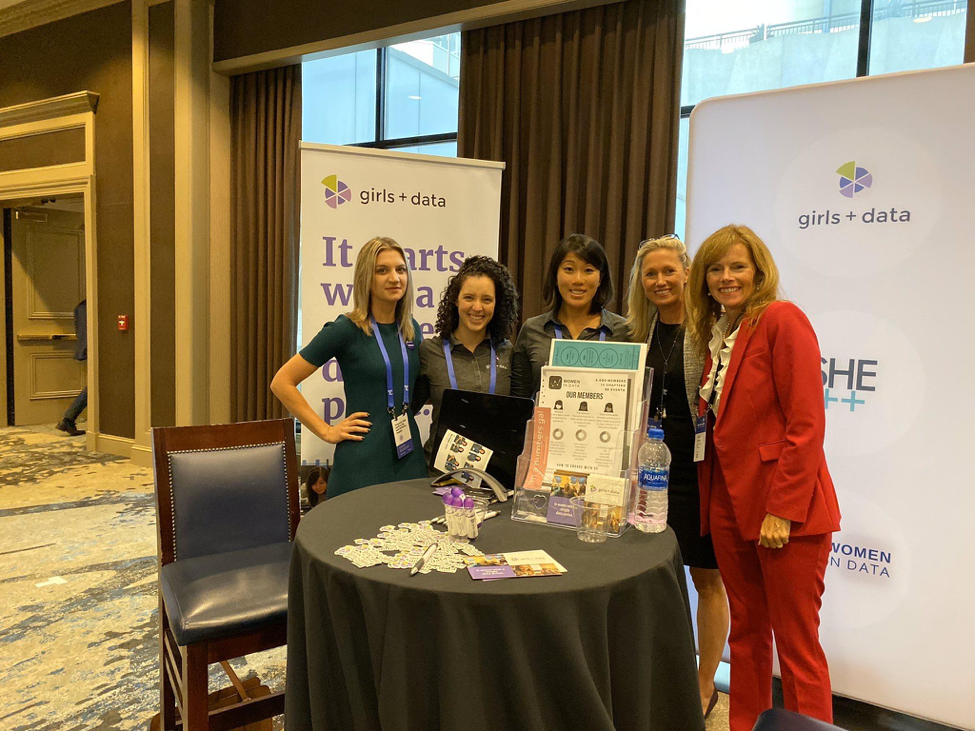A few years ago, I wrote a blog on International Women’s Day suggesting that achieving gender parity is no more or less a woman’s responsibility that it is a man’s.

Last week at Beyond 2019, we hosted an Empowerment Through Inclusion breakfast to provide a venue to bring both men and women together to talk about diversity issues in an open forum. The discussion actually started even earlier, though, when it came time to decide on the session title. Should it be Women in data or Diversity in data? How could we encourage the strongest participation from both men and women?
We settled on Empowerment Through Inclusion and then worried that people may not fully understand the intent of the event.
Ultimately the title was absolutely perfect and despite the breakfast occurring the morning after our customer appreciation party, we had a packed house. Both females and our male allies filled the tables for vibrant roundtable discussions ranging in topics from Work-Life Balance to Unconscious Bias. We rounded out the event with a panel discussion hosted by our very own Cindi Howson. Cindi has been a pioneer in championing the business benefits of diversity and kicked us off with statistics such as a recent study from McKinsey that shows diverse companies are 21% more likely to have above average profitability.
I was honored to be one of the panelists along with Kira Wetzel founder of Girls + Data, Sadie St. Lawrence, founder of Women in Data and Natalie Longhurst, Chief of Staff at Vodafone. We all shared similar sentiment on being a minority in our fields and what can be done to close the gap. In speaking with participants after the breakfast there were a few key takeaways:

Work/Life Balance Has No Gender
Often we think about work life balance as something impacting women more than men, and particularly for those that are trying to raise a family. But as we discussed during the session, the need to find the right work life balance, and find room for both, impacts everyone. Hearing the men share openly and candidly that they too struggle with the balance was incredibly powerful and personally helped me develop a connection I didn’t expect.
Also, discussions around finding this balance often resort to what can companies or organizations do to promote better balance, It was interesting to hear people at my table share small changes they’ve made in their own lives to be deliberate with their time so they can be present both at work and at home. Ideas were shared around family tech free days or using time in the car with your kids as a time to connect rather than multi-task on work calls.
So next time you find a lull in conversation ask your peers, what are you doing to try and achieve this idea of work/life balance? You might be surprised with some new ideas!
Spotting Unconscious Bias is Just the First Step
Unconscious bias dramatically impacts diversity and inclusion efforts and shapes our modern workforce. To overcome years of “cultural norms” it’s critical that everyone draw awareness to their own biases - we all have them to some degree or another!
But it’s not enough to spot our own biases. We need to see and correct them in the larger organization. A colleague shared how these roundtable discussions helped him recognize the need to challenge not only his own unconscious bias but the same bias in others. If done politely, this can be disarming and also help to move relationships forward.
Take Steps at Every Part of the Talent Pipeline
When it comes to diversity, particularly gender diversity, we often talk about fixing the talent pipeline. Thoughtspot is partnering with organizations working on addressing these issues and we were lucky enough to have them join us at Beyond.
Kira, who founded Girls + Data, discussed how her organization is focused on inspiring more young girls to consider a career in technology by engaging them early in their education and showing them more ways to get involved beyond simply coding. They run “data camps” blending topics of interest to technology; the girls who attend may start the day feeling hesitant, but they leave excited about technology and data.
But as we discussed, fixing the pipeline doesn’t end with just attracting young girls to tech. Sadie pointed out that humanizing offerings and showcasing the social impact of a project can help people of all walks of life at every stage of their career find more meaning and value in technology teams than focusing exclusively on the technology or project goals.
And we all agreed that keeping encouragement and recognition are critical, not just for women, but for all employees, to create a lasting culture of inclusion.
Reset Expectations, but Don’t Expect Overnight Miracles
Years of cultural “norms” have impacted the unconscious bias and we can’t expect it to change overnight.
But we must start somewhere and so it’s critical that organizations are intentional about how they will develop a diverse workforce, and open the dialogue for employees to weigh in. For some, they may publish diversity goals. For other organizations it may be more subtle through employee offerings to encourage diversity. Regardless of which path your company takes, it’s important to just get started.
Honest Dialogue is the First Step
For me personally I walked away from our breakfast incredibly encouraged. A few years ago, a breakfast such as this one would be 90% women with a few brave men. Today we had close to 50/50 participation. This shift created an atmosphere of empathy and a recognition that to truly develop a culture of inclusion the male allies must be part of the dialogue.
Empowering girls and young women is not an ‘option’ for a modern society — it should have already happened a long time ago. So, whether it’s a written corporate goal or just an aspiration, what can we all do to close the gender gap? It begins with increasing the talent pool, something that starts with young girls and continues as we recruit young women into the workplace. This requires everyone to take responsibility to identify an employee's passion and then encourage and inspire them to continue to develop the skills needed to succeed in today’s modern world.








